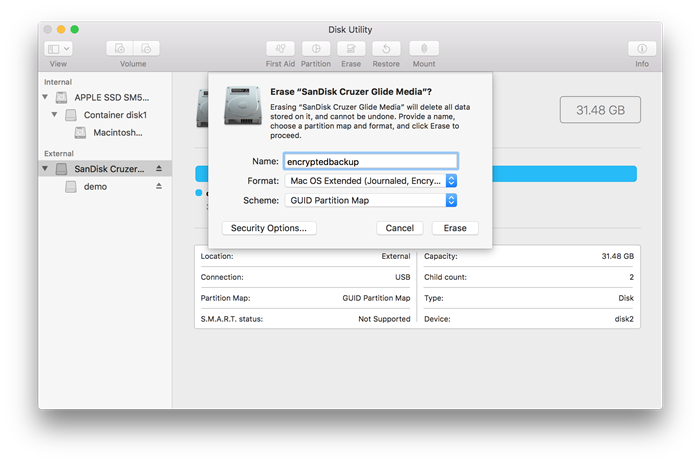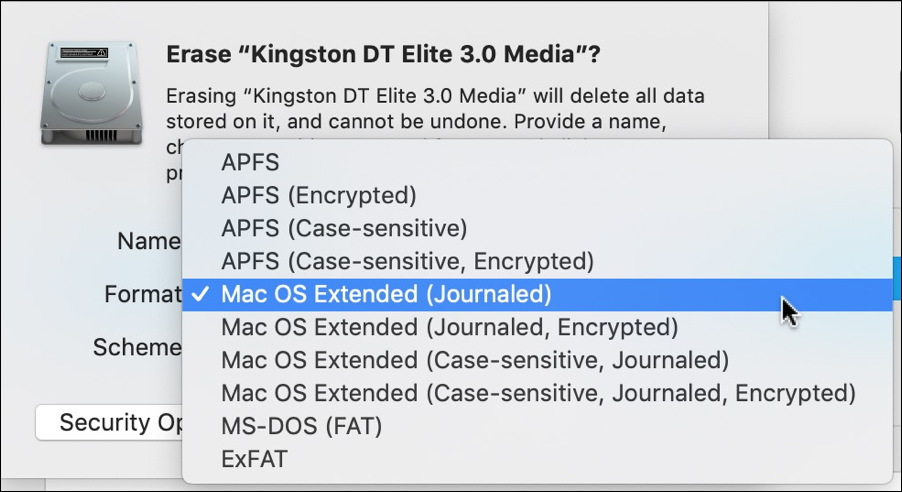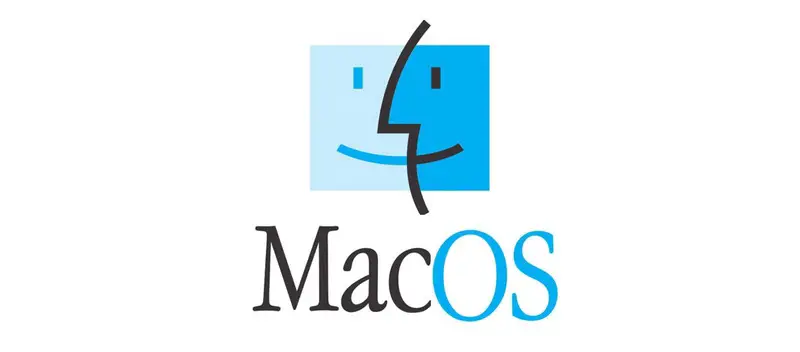-
Format Flash Disk On Mac카테고리 없음 2021. 1. 20. 23:19
Most external hard drives are designed to work for Windows computers. So if you’re trying to connect an external hard drive to a Mac, you might have to format the drive before you can use it. Here’s how to do that:
To format a drive on a Mac, you’ll need the built-in Disk Utility application. Press Command+Space to open the Spotlight search dialog, type “Disk Utility”, and press “Enter” to launch the app. You can also open a Finder window, select “Applications” in the sidebar, and head to Utilities Disk Utility. How do I use Disk Utility to reformat my hard drive? Open Disk Utility. Select your new hard drive from the sidebar. If you don’t see it, go to View Show All Devices. Click the Erase button at the top of the window. Choose a new name for your Mac’s hard drive. Change the format to Mac OS Extended (Journaled). Here they are: 1. Use Disk Utility to Format USB Flash Drive on Mac The simplest way to format a disk in Mac OS is to simply use the. Use Terminal to Format USB Drive on Mac. Place the DVD-RW you want to format into your Mac. If there are any files you want to keep that are on the disc, be sure to copy them to your hard drive.
How to Format a Hard Drive for Mac
Note: If you already used your external hard drive on a PC, be sure to back up any files on it. Formatting your drive will wipe out all the data in it.
- Connect an external hard drive to your Mac. Some external hard drives need to be plugged into an outlet to work.
- Go to Spotlight Search, type in Disk Utility, and click the first option. This will open the Disk Utility app, where you will find all the internal and external drives that are connected to your Mac.
- Then click View in the top-left corner of the window and select Show All Devices.
- Click the external hard drive you want to format. You can find this on the left-hand side of the screen under External Hard Drives. For the best result, select the disk (the highest option in the external tree).
- On the top menu, click Erase. This will open a small pop-up window with a warning that erasing the drive will delete all data stored on it and that it can’t be undone.
- Choose a name, format, and scheme for your drive. You can choose whatever name you want, and you should choose GUID Partition Map for the Scheme in most cases. However, you can choose between the following formats:
- Mac OS Extended (Journaled) is the best option for most Mac users since it is compatible with all Macs.
- APFS (Apple File System) is only for newer Macs running macOS 10.13 or later.
- exFAT is compatible with both PC and Mac.
- MS-DOS (FAT) is also compatible with Mac and PC, but you can only transfer files smaller than 4GB.
- When you’re done with providing the setup details, click Erase. This will immediately wipe the entire drive.
If you get an error message that states, “Erase process has failed. Click done tocontinue,” don’t freak out about it. This is an issue caused by Time Machine running on your externaldrive.
You will need to turn off Time Machine. You can do this by opening System Preferences and unchecking the boxnext to “Back Up Automatically”.Then click Options beside “ShowTime Machine in menu bar.” This will open another window. Click Cancel and it will turn off the Time Machine.
After you turn off the Time Machine, redo steps 4 to 6.

How to Partition anExternal Hard Drive on Mac
If you have formattedyour drive, you can then partition the drive, which will splitthe drive into two formats. This is perfect for anyone who uses Macs and PCsand wants to transfer files between the different operating systems with anexternal drive. Here’s how to do that:
- Open Disk Utility and select the drive that you want to partition. It is best to click View > Show All Devices so you can selectthe disk rather than a container.
- In the top menu, select Partition.
- Then click the plus sign at the bottom of the pie chart. Every time you click this plus sign, a new partition will becreated.
- Choose a name, format and size for each partition. You can also change the size of each of the partitions bydragging the white dots at the edge of the circle.
- Finally click Apply.
Why Partition a Hard Drive?
Partitioning an external hard drive allows youto have separate drives for Mac, PC, and any other operating system. Now youdon’t have to go out and buy hard drives for every computer you use.

A partition also gives you a dedicated space foryour Time Machine back-up files or a bootable backup of your operating system.It also helps protect your data if your drive gets infected with malware, as itwould be contained within one of the partitions.
Now that you know how to format an external drive for Mac, check out our blog on the difference between an HDD and an SDD.
Was this article helpful?
Related Articles
For Apple Mac users, there are two ways to format USB flash drive to FAT32, including Disk Utility and Terminal command line. Refer to detailed steps of using both tools for FAT32 format. Formatting would erase data completely, make sure that you have a data backup. Otherwise, you can use data recovery software to recover data from a formatted USB drive.
Are you looking for a secure way to format USB to FAT32 on Mac? You are at the right place. Follow here, you can find two methods that will assist you in doing so on your storage device. And if you lost data during the formatting, reliable Mac file recovery software is ready to help anytime:
Workable Solutions Step-by-step Troubleshooting Method 1. Use Disk Utility Connect USB to Mac > Go to Applications > Utilities > Disk Utility > Select USB and click 'Erase'...Full steps Method 2. Use Terminal Command Connect USB to Mac > Hit cmd + space keys > Type terminal and hit Enter...Full steps Bonus Tip. Recover Formatted Data If you lost data due to formatting, run EaseUS file recovery software > Scan and recover formatted data...Full steps 
How to Format a USB Flash Drive with Mac to FAT32
Computer users who use a USB might have the demand for formatting it to the FAT32 file system. Compare with the other commonly used NTFS file system on a flash drive, FAT32 has a compatibility advantage across many operating systems.

It's a universal format that is compatible with Mac OS X/macOS, Windows, Linux, and DOS systems. So, if users anticipate using the flash drive with more than one operating system, they will definitely benefit from the FAT32 file system. For Apple Mac users, there are two ways to format a USB flash drive to FAT32, namely Disk Utility and Terminal command line. Below are the detailed steps of the FAT32 format with both methods.
Method 1. Format FAT32 on Mac [Disk Utility]
To format USB to FAT32 with Disk Utility will erase all data on the flash drive, so before you doing so, please do remember to check whether you have saved useful data to another secure device in advance.
To format the USB drive to FAT32, follow the next steps:
Step 1. Connect the USB flash drive to your Mac computer.
Step 2. Go to Applications >Utilities > Double click and open Disk Utility.
Step 3. Select your USB flash drive on the sidebar, choose Erase.
Step 4. Rename the USB flash drive (optional).
Step 5. Choose the format as MS-DOS (FAT) for Format, Master Boot Record for Scheme. Then click Erase.
Wait for the process to complete, then you'll get an empty new USB flash drive with FAT32 as the file system. You can use it for saving data again.
Method 2. Format FAT32 on Mac [Terminal Command Line]
The command-line behavior does the same way to erase data with the Disk Utility. Again, create a backup before taking this action.
To format FAT32 on Mac with Terminal, follow the next steps:
Step 1. Connect the USB flash drive to your Mac computer.
Step 2. Hit cmd + space to run Spotlight, type: terminal, and hit Enter.

Step 3. Type: diskutil list and find out which disk is your USB drive.
Step 4. Type: sudo diskutil eraseDisk FAT32 MBRFormat /dev/disk2.
- sudo gives you user right.
- Diskutil calls disk utility program.
- eraseDisk commands to format.
- FAT32 sets the file system.
- MBRFormat tells disk utility to format with a Master Boot Record.
- /dev/disk2 is the location of the USB drive.
Wait for the process to complete. After this, you can type 'diskutil list' in the command again to check if the formatting has been successful.
Bonus Tip: How to Recover Data from Formatted USB
Formatting the USB would erase the data on it completely, so please make sure that you have a backup. If you don't, you can count on data recovery software to retrieve the lost data.
EaseUS Data Recovery Wizard has both Windows and Mac versions, so it's a good choice for data recovery, no matter you're using a PC or Mac. For Mac users, it only takes a few clicks for the software to scan and display the formatted data. To guarantee an effective data recovery without spending money to no avail, you can install the Mac data recovery free version for the first trial. You can preview all the found data before the final recovery.
To recover data from a formatted USB flash drive on Mac, follow the next steps:
Step 1. Correctly connect your USB flash drive to your Mac. Launch EaseUS Data Recovery Wizard for Mac. Start selecting the flash drive and click 'Scan' to let the software search lost files on it.
Format Flash Disk Di Mac
Step 2. After a quick scan and deep scan, all files will be presented in the left panel in the scan results.
Format Flash Disk On Mac
Step 3. Select files you want to recover and click the 'Recover Now' button. Don't save the recoverable files to the USB drive itself in case of data overwriting.